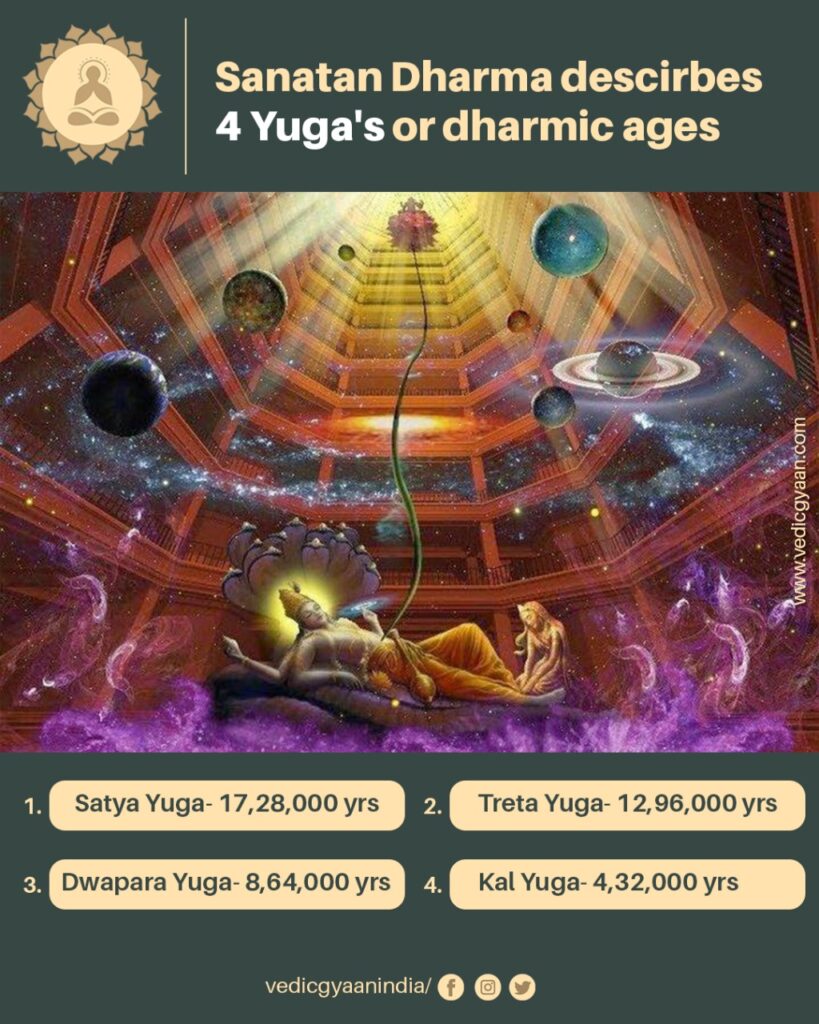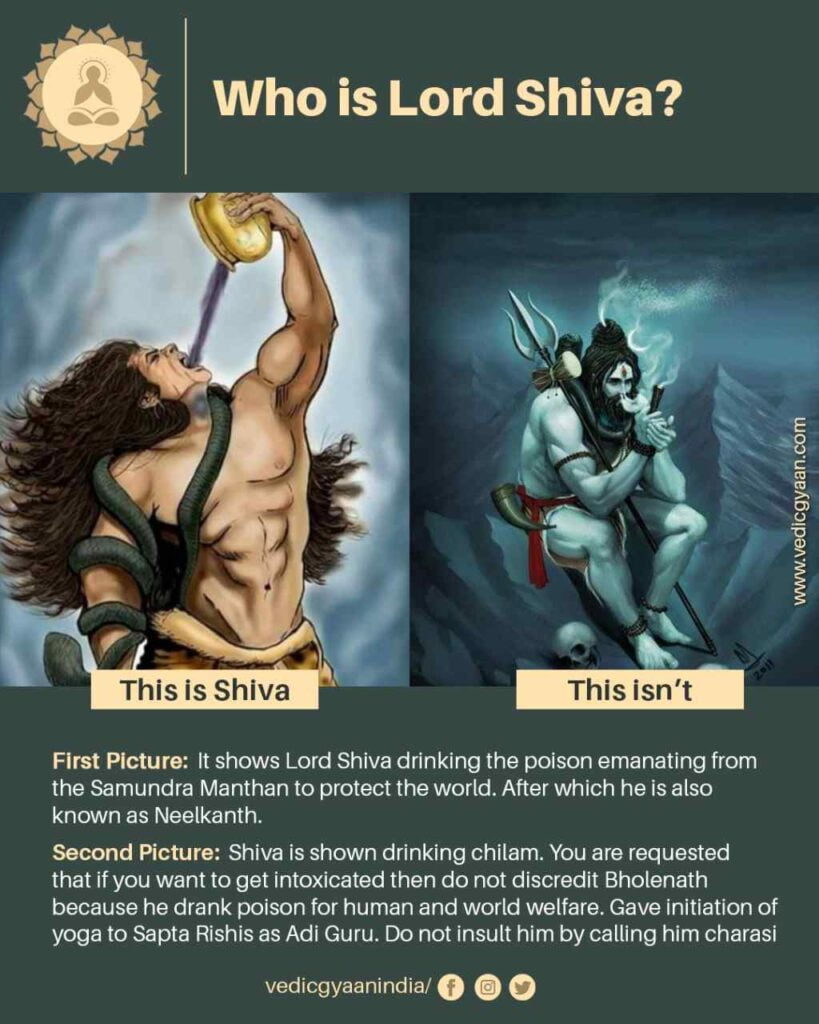We have often heard our elders using the word Beej mantra. But do you know what it means? “Beej” symbolizes the initial point or seed from which all existence emerges. It represents the notion that the entire cosmos originates from it. Just as a complete tree blooms from a beej, the smallest cell of life develops into an organism. Further, a life encompasses a single DNA.

In the context of “Beej Mantra,” the complete power of a devta is condensed. Mantras usually consist of five to 108 syllables, a Beej Mantra consists of just one or two syllables.
It’s a sound that lacks a literal meaning, yet it holds a reservoir of spiritual principles or energies. These “Beej” sounds have the incredible ability to direct physical, emotional, and spiritual essence.
There are numerous Beej Mantras. The most well-known one is “Om” (or “Aum”), a sacred syllable resonating with the primal sound of the universe. These are the Beej Mantras associated with devi-devtas, the Beej Mantras of the seven chakras, and even Beej Mantras have a connection to the nine celestial bodies (Nakshatra).
How does Beej Mantra work?
During the recitation of a “Beej Mantra,” each spoken word holds significant meaning. It’s essential not to alter the letters or sounds by breaking them into simple and more understandable language. These are natural manifestations. They represent a condensed version of the complete form of a device, devi or planet. Just like in English, we use “PM” for Prime Minister, “LIC” for Life Insurance Corporation, and the meaning is understood. Similarly, by providing the universe with Beej Mantras like a sound and rhythm, it comprehends what we desire and fulfils our intentions through the medium of that devta.
Pronouncing Beej Mantra
Always remember that the essence of the power of Beej Mantras lies not in their literal meanings but in their precise pronunciation with a specific rhythm and tempo. The primary significance of Beej Mantras lies within their seed syllables.
Observe for yourself that a single syllable has three distinct pronunciations:
- The syllable “ङ” is predominant in the word “गंगा” (Ganga).
- The syllable “न” in the word “गन्दा” (dirty).
- The syllable “म” in the word “गंभीर” (profound).
In other words, the sequential pronunciation of “ङ,” “न,” and “म” is occurring.
Therefore, we advise that practising Beej Mantra should ideally be done in the presence of an experienced practitioner. The efficacy of the mantra should not get compromised by incorrect pronunciation. Thus, it’s crucial to learn the correct pronunciation of the Beej Mantra from a knowledgeable person. Once you’ve chosen a suitable Beej Mantra, you can practice it at your convenience and according to your schedule, whether you move around or sit. Moreover, Women ask if they can chant mantras on specific days, and you can chant Beej Mantras during those days.
Some of the various Beej Mantras
Om or Aum (ॐ):
The root Beej Mantra is “Om.” It is the mantra from which all other mantras originated. Each Beej Mantra is associated with a specific bhagwan. There are various types of Beej Mantras – Yoga Beej Mantra, Tejo Beej Mantra, Shanti Beej Mantra, and Raksha Beej Mantra.
Dum (दूं) :
Dedicated to Goddess Durga, dum is chanted to seek her blessings and protection. The syllable “द” represents Durga, and “ऊ” signifies protection. Here, the dot (bindu) represents prayer. This mantra praises Goddess Durga in her universal motherly form.
Kreem (क्रीं) :
This mantra is for Goddess Kali. It holds specific powers that please the fierce form of Goddess Parvati, namely Goddess Kali. “क” signifies Kali, “र” represents Brahma, and “ई” stands for Mahamaya. The mantra seeks protection from Kali to eliminate misfortunes.
Hreem (ह्रीं) :
This Devi Mahamaya Beej Mantra is also known as the Bhuvaneshwari Beej Mantra. “ह” symbolizes Shiva, “र” represents nature, and “ई” signifies Mahamaya. The Bindu represents the dispelling of troubles. It’s believed to help remove unfortunate circumstances.
Shreem (श्रीं) :
It is the Lakshmi Beej Mantra, chanted for attaining wealth. “श्र” represents Mahalakshmi, “र” stands for wealth, and “ई” signifies fulfilment. Chanting this mantra is recommended for invoking Mahalakshmi’s blessings for prosperity.
Aim (ऐं) :
This Beej Mantra invokes Goddess Saraswati, the deity of knowledge and education. The mantra is essential if seeking wisdom and knowledge. The syllable “ऐं” signifies addressing Goddess Saraswati.
Hroum (ह्रौं) :
It is a Shiva Beej Mantra. “ह्र” symbolizes Shiva, and “ॐ” represents Sadashiva. Chant this mantra with the presence of Lord Shiva in mind to seek his grace.
Hoom (हूं) :
This powerful Beej Mantra is for Lord Bhairav, a fierce form of Lord Shiva. “ह” represents Shiva, and “ऊं” is meant for Bhairav. This mantra pleads to Lord Shiva to dispel miseries.
Shaun (श्रौं) :
This mantra is for Lord Narasimha, a manifestation of Lord Vishnu. “क्ष” represents Narasimha, “र” stands for Brahman, “औं” signifies a pointing upwards gesture with the teeth, and the dot represents the removal of suffering. It is a prayer to Lord Narasimha to alleviate distress.
Gum (गं) :
It is an auspicious mantra associated with Lord Ganesha. “ग” represents Ganesha, and the dot signifies removing sorrow. This mantra seeks blessings for removing sorrows through Lord Ganesha.
Glaum (ग्लौं) :
It is another Ganesha Beej Mantra. The mantra seeks to please Lord Ganesha. “ग” symbolizes Lord Ganesha, “ल” signifies pervasiveness, and “ॐ” represents excellence.
Kleem (क्लीं) :
This Beej Mantra is for Lord Kamadeva, the deity of love and desire. Chant this mantra to seek love and desire-related blessings. “क” signifies Kamadeva, “ल” is for Lord Indra, and “ई” represents contentment.
These Beej Mantras hold deep significance and can help practitioners connect with specific devi-devtas and their attributes. Understand their meanings for correct pronunciation while keeping the associated intentions in mind.



